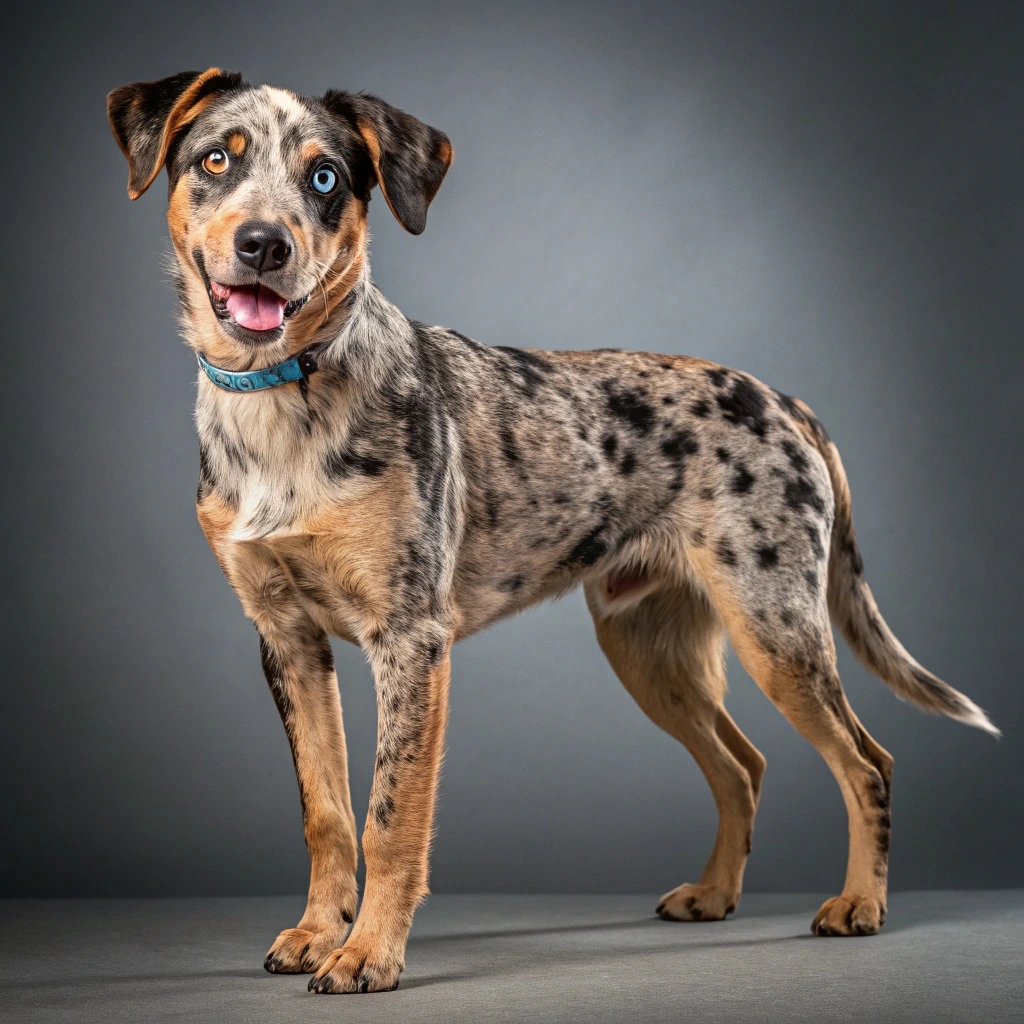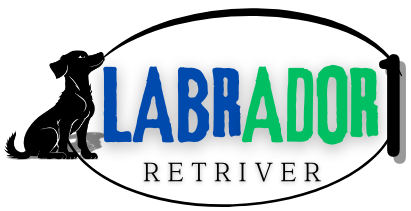What is a Catahoula Lab Mix? Key traits and care tips
It’s likely that if you’re reading this, you’ve heard of Catahoula Lab Mix and are curious about what makes this particular dog breed mix unique. Perhaps you’re thinking about bringing one into your house or you’re just interested in the characteristics this hybrid has to offer. In any case, you’re going to learn all you need to know about this special dog and how to take care of it.
One of the most rewarding experiences in life is owning a dog. The process can be even more thrilling—and occasionally difficult—when dealing with mixed breeds, such as the Catahoula Lab Mix, as you learn about their unique personality, energy level, and maintenance requirements. You’ll have useful knowledge at the end of this guide to help you determine whether this dog is the best fit for your way of life and how to provide the best life for yours.
Table of Contents
Understanding the Catahoula Lab Mix: Origins and Overview

What Exactly Is a Catahoula Lab Mix?
The Louisiana Catahoula Leopard Dog and the Labrador Retriever are two different and well-known dog breeds that have crossed to create the Catahoula Lab Mix. This hybrid is an intriguing blend of traits because each parent contributes distinct qualities that affect the child.
- The Louisiana Catahoula Leopard Dog, often simply called “Catahoula,” is famous for its striking coat patterns, sharp intelligence, and working dog heritage. Originally bred in Louisiana for herding and hunting, the Catahoula is active, alert, and protective.
- The Labrador Retriever is one of the most popular dog breeds worldwide, loved for its friendly disposition, loyalty, and adaptability. Labs are family dogs known for their gentle nature and eagerness to please.
Combining these two breeds produces a dog that frequently combines the best traits of both, including intelligence, energy, and a protective yet amiable disposition.
Why Consider a Catahoula Lab Mix?
You might be wondering why someone would choose a Catahoula Lab Mix over a purebred dog. There are several compelling reasons:
- Unique Appearance: This mix often inherits the striking coat patterns from the Catahoula parent, combined with the sturdy build of the Lab, making for a visually impressive dog.
- Balanced Personality: You get the protective instincts of the Catahoula alongside the gentle, loving nature of the Lab.
- Versatility: Whether you’re an active individual, a family with children, or someone seeking a loyal companion, this mix can adapt well to various environments.
Knowing the history and advantages of the Catahoula Lab Mix prepares you to discover what it really means to own one.
Key Traits of the Catahoula Lab Mix

Physical Characteristics
When it comes to looks, your Catahoula Lab Mix can be quite the head-turner. Due to the mix of breeds, their size, coat, and coloring can vary, but some general traits are common.
- Size: Typically, these dogs range from medium to large-sized. Most adults weigh between 40 and 70 pounds and stand about 20 to 26 inches tall at the shoulder.
- Coat: A short to medium coat is to be expected. While the Lab side can contribute solid colors like black, chocolate, or yellow, the Catahoula influence frequently adds lovely leopard-like spots or mottled patterns.
- Variations in Color: The coat may be solid, speckled, or a combination of colors, including brown, black, grey, or brindle.
Here’s a quick reference table to understand typical size and weight ranges by age:
| Age Group | Weight Range (lbs) | Height Range (inches) |
|---|---|---|
| Puppy (0-1 yr) | 15 – 40 | 10 – 20 |
| Adult (2-7 yrs) | 40 – 70 | 20 – 26 |
| Senior (8+ yrs) | 40 – 65 | 20 – 26 |
Temperament and Personality
Understanding your dog’s personality will help you provide the right environment and care.
- Intelligence: It is commonly known that both parent breeds are intelligent. Your Catahoula Lab Mix is probably going to learn commands fast and be excited to take part in mental challenges.
- Energy Levels: This mix tends to have high energy. You can expect a dog that loves activity—whether it’s running, playing fetch, or hiking.
- Social Behavior: These dogs usually show their families loyalty and protection. If properly socialized at a young age, they typically get along well with kids and other pets.
- Protectiveness: The Catahoula side can sometimes make them watchful and a bit reserved around strangers, which makes them good watchdogs.
Health Considerations
Knowing the potential health challenges your dog may face helps you prepare for preventive care.
- Common Health Problems: Certain genetic disorders are more common in both parent breeds. Hip dysplasia, progressive retinal atrophy (PRA), and specific skin allergies are among them.
- Lifespan: Generally, Catahoula Lab Mixes live between 10 to 14 years, similar to their parent breeds.
- Preventive Care: Regular vet check-ups, a balanced diet, and sufficient exercise are vital to keep your dog healthy and happy.
Essential Care Tips for Your Catahoula Lab Mix

Nutrition and Diet
What you feed your Catahoula Lab Mix has a huge impact on its overall health and energy. Here are some guidelines:
- Balanced Diet: Aim for high-quality dog food with a good balance of protein, fats, and carbohydrates. Because of their active nature, they may need slightly more protein to support muscle health.
- Avoid Harmful Foods: Certain human foods like chocolate, grapes, onions, and excessive fatty snacks can be toxic.
- Feeding Schedule: Puppies require more frequent meals (usually three to four times daily), while adults typically eat twice a day.
Here’s a nutritional guideline table to help you plan meals based on age:
| Life Stage | Nutritional Needs | Recommended Food Types | Notes |
|---|---|---|---|
| Puppy | High protein, growth support | Puppy formula with DHA | Supports brain and bone growth |
| Adult | Balanced, maintain energy | Adult dog food, balanced mix | Keep lean muscle, avoid obesity |
| Senior | Lower calories, joint support | Senior formulas with glucosamine | Supports aging joints |
Exercise and Activity Needs
Your Catahoula Lab Mix is not a couch potato. To keep them healthy and mentally stimulated:
- Daily Exercise: Aim for at least 60 to 90 minutes of physical activity daily. This can include walks, runs, and playtime.
- Mental Stimulation: Puzzle toys, obedience training, and interactive games can help satisfy their intelligent mind.
- Recommended Activities: Hiking, agility training, fetch, and swimming are excellent options.
Chewing and barking are two behavioral problems that can result from insufficient exercise.
Grooming and Maintenance
While your Catahoula Lab Mix’s coat is usually low to moderate maintenance, regular grooming keeps them looking and feeling their best.
- Brushing: Brush once or twice a week to remove loose hairs and keep the coat shiny.
- Bathing: Bathe every 4 to 6 weeks, or as needed, using a gentle dog shampoo.
- Other Care: Regular nail trims, ear cleanings, and proper dental hygiene are essential. Examine your dog’s ears once a week to prevent infections, particularly if they spend a lot of time outside.
Training and Socialization
The secret to a happy and well-behaved dog is proper socialization and training.
- Training Advice: Use positive reinforcement methods, like praise and treats, to begin training early. Clear boundaries and regular commands will get good results from your dog.
- Socialization: Introduce your dog to a variety of people, places, and other dogs from a young age to build confidence and reduce fearfulness.
- Addressing Challenges: Some Catahoula Lab Mixes may have stubborn streaks; patience and consistency help overcome this.
Frequently Asked Questions (FAQs) about the Catahoula Lab Mix

What is the average lifespan of a Catahoula Lab Mix?
A: Typically, they live between 10 and 14 years, with proper care and regular vet visits.
Are Catahoula Lab Mix dogs good with children?
A: Yes, they generally have a friendly and protective nature toward kids, making them great family pets if socialized early.
How much exercise does a Catahoula Lab Mix need daily?
A: About 60 to 90 minutes of daily physical activity combined with mental stimulation works best.
What health issues should I watch for in a Catahoula Lab Mix?
A: Common concerns include hip dysplasia, eye problems like PRA, and skin allergies. Regular check-ups are important.
Is the Catahoula Lab Mix easy to train?
A: They are intelligent and eager to learn, but consistency and positive reinforcement are crucial.
Conclusion
Owning a Catahoula Lab Mix offers a wonderful blend of loyalty, intelligence, and energy. By understanding their unique traits—from their striking appearance to their high activity needs—you’ll be ready to provide the care they deserve. Whether you’re an active individual or a family seeking a protective and loving dog, this hybrid can be an excellent fit. Remember, meeting their nutritional, exercise, grooming, and training needs will help ensure a happy, healthy, and well-adjusted companion for many years.







